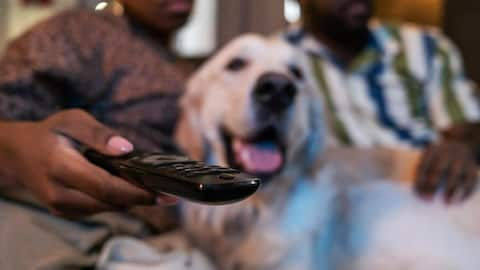UK pets show increasing interest in television, study finds
What's the story
A recent study by Worcester Bosch has revealed a surprising trend among pets in the United Kingdom. The study, which surveyed approximately 2,000 pet owners, found that around 12 million dogs and 11 million cats could be classified as "Gogglebox pets." This term is used to describe pets that display an unusual interest in watching television.
Pet companionship
Television has become the primary companion for pets
The study also revealed that a significant number of British pet owners leave the television on for their pets when they're not at home. This practice has led to the television becoming a primary source of companionship for these pets in the absence of their owners. Additionally, many pet owners reported enjoying watching sports events or films with their four-legged friends when they were at home.
Pet Engagement
Pets remain engaged with TV in owners' absence
According to the research, about 28% of pet owners ensure their TVs are on for their pets before leaving the house. Furthermore, 36% of pet owners with home surveillance systems have observed that their pets stay focused on the TV even when they're not at home. Certain individuals leave radios on for their dogs or cats when they need to run errands, believing it alleviates their pet's sense of loneliness.
Pet preferences
Pets show preferences for specific TV content
One pet owner shared that her bulldog is familiar with all the characters of one of their favorite shows and particularly enjoys watching sports, especially football. This suggests that pets may not only watch television for companionship but also develop preferences for specific content. The study's findings indicate a deep integration of pets into human routines and lifestyles.
Flicker effect
How dogs view onscreen images
Dr. Ernst Otto Ropstad, an associate professor at the Norwegian School of Veterinary Science, told Petful that dogs see images on modern TV as clearly as their surroundings. Older television sets caused a flicker effect that dogs could notice due to their superior eyesight compared to humans. However, with newer high-definition (HD) TVs, the increased frame rate provides smoother motion, which even dogs can perceive, similar to humans.
